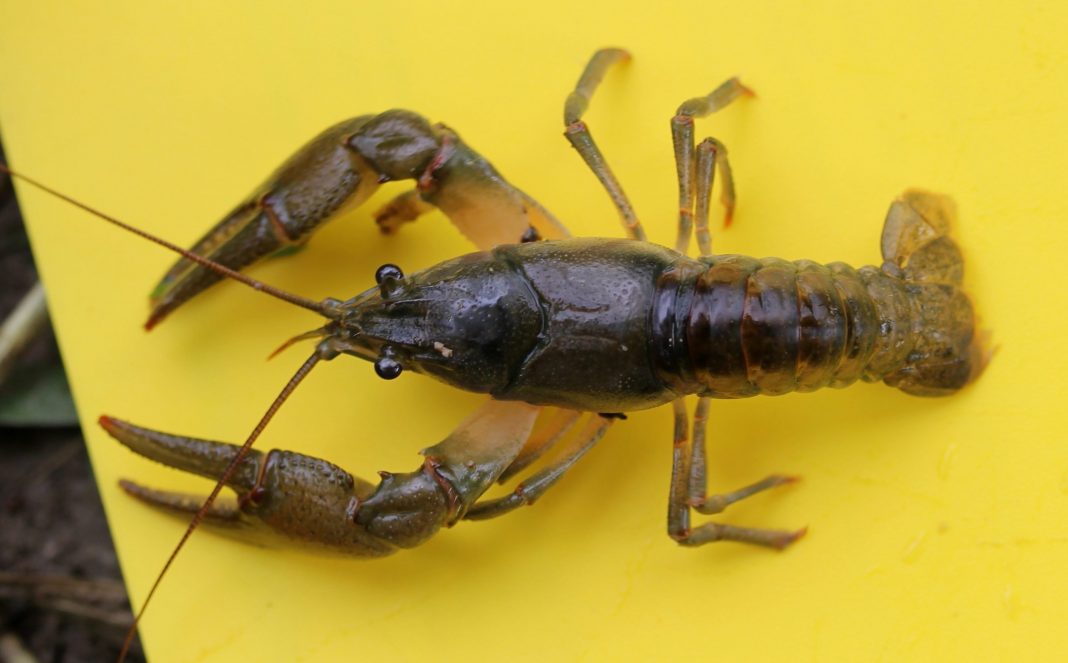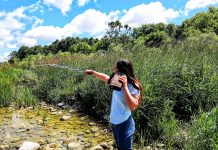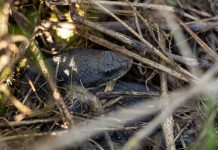We here at Huron Stewardship Council like to talk about the queensnake a lot. One thing about queensnakes that is not commonly known is that they eat only crayfish, and only ones that have just moulted their hard shells (and are soft like a gummy bear). Most people don’t think too much about the humble crayfish, but they are amazing creatures in their own right, and we would like to share some information about them.
In General
Crayfish are crustaceans, which means that they have ten legs and a hard, calcium-rich shell. The front-most legs are large pincers, which the crayfish uses to protect themselves, or to pick up food, or to dig burrows. The eight walking legs are skinnier, and the first two pairs are tipped with smaller pincers while the last two have a single point on the end. They also have a powerful tail which they can flick to swim backwards if they have to move quickly.
Crayfish mothers protect their young, keeping the eggs secured to the bottom of their tails. When the young hatch, they stay near their mother’s home (usually a burrow or a small clearing under a submerged rock) and will rely on her for protection until they are big enough to move out on their own.
There are ten species of crayfish found in Ontario, and five can be found in Huron County.
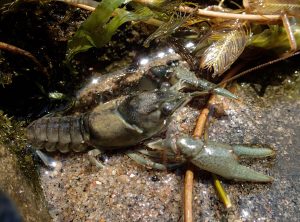
Northern Clearwater Crayfish (Orconectes propinquus)
By far the most common species that we encounter when looking for queensnakes, clearwater crayfish can be identified by the dark stripe going down the centre of the tail. About the size of a human thumb, the clearwater crayfish are not very picky about where they live, and are usually found under rocks and other cover. (Photo credit: Dr. P. Hamr).
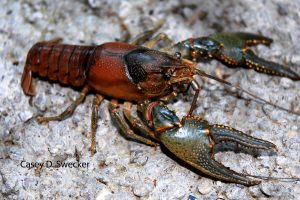
Virile Crayfish (Orconectes virilis)
Another fairly common creature in the streams that we look for queensnakes in, virile crayfish are a little bigger and can be identified by their distinctive blue claws and the two rows of dots that go down the backs of their tails. (Photo credit: C. Swecker)
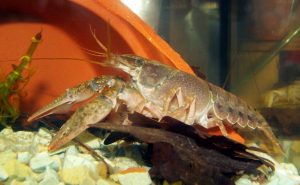
Callico Crayfish (Orconectes immunis)
These crayfish have a salt-and-pepper colouration to their shells, and like still water or slow-moving water, like ponds, marshes, or slow streams. They have smaller pincers than some of the other species in Huron County. (Photo obtained from wikimedia).
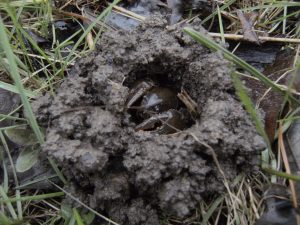
Digger Crayfish (Fallicambarus fodiens)
Also called “chimney crayfish”, digger crayfish are usually greenish brown. They excavate burrows with multiple entrances, and the openings are surrounded by a ‘chimney’ of little pellets of soil. The tunnels are usually flooded by ground water at a certain depth, and can go more than half a metre underground. Lots of other animals make use of their burrows. (Photo credit: Dr. P. Hamr).
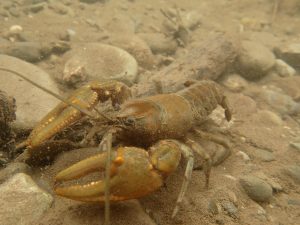
Big Water Crayfish (Cambarus robustus)
One of the biggest crayfish in Ontario, and probably the biggest in Huron County, big water crayfish are aggressive and will take over areas where the habitat is good for them, driving out other crayfish. They usually live in streams, and rivers and prefer fast flowing water. (Photo credit: Dr. P. Hamr).
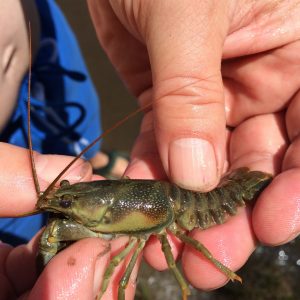
Rusty Crayfish (Orconectes rusticus)
In addition to the native species listed above, the rusty crayfish has moved into the Great Lakes region and other places; originally from the Ohio River watershed, they have been spread by anglers who use them as bait. The rusty crayfish gets its name from the red spots on the sides of its shell. They are quite large, and will fight off predators rather than try to flee; they also drive smaller, native crayfish out of their habitats, making them an invasive species. (Photo credit: Dr. P. Hamr).
We have not seen any rusty crayfish during our queensnake surveys, but if you notice any in Huron County, please contact the MNRF invasive species tipline at 1-800-563-7711 and report the sighting.
We hope you’ve gained some appreciation for these feisty little creatures. The next time you are on the water, try to take note of some of the smaller animals that often go unnoticed by people; you will be amazed at what you see! If you want to learn some more about Ontario’s crayfish, follow this link.
-Geoff Hughes, SAR Technician, Huron Stewardship Council

